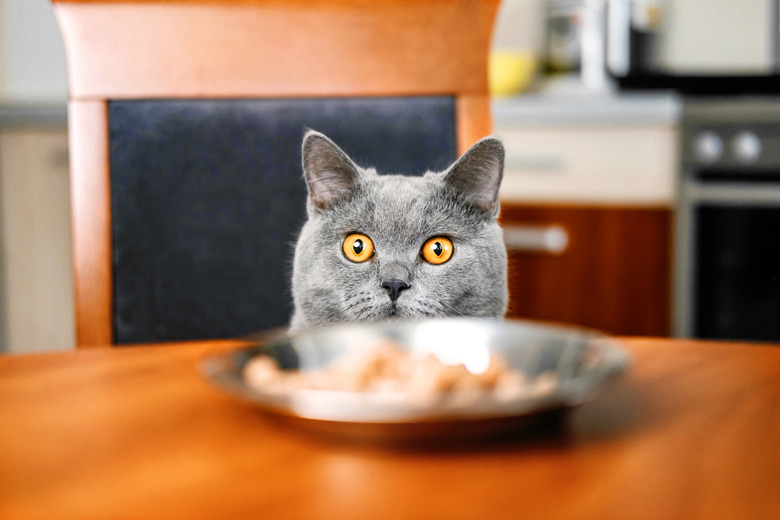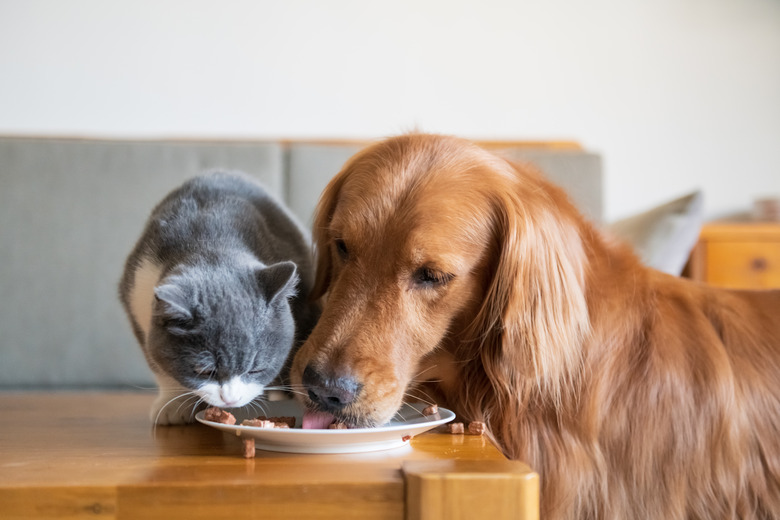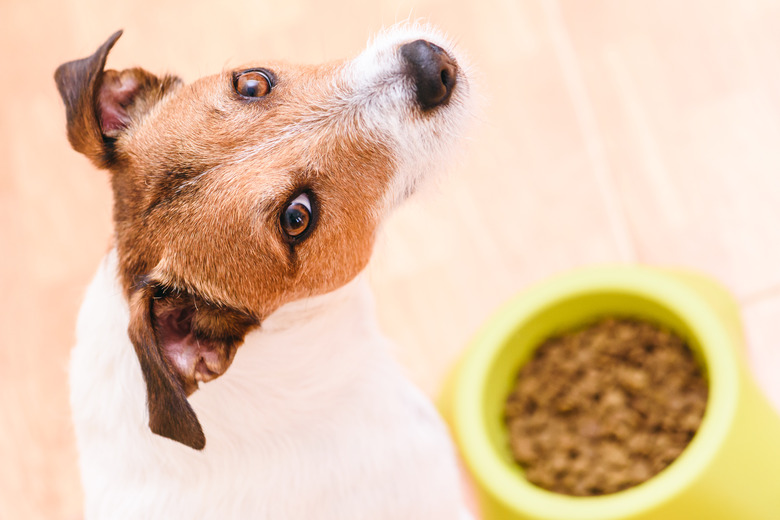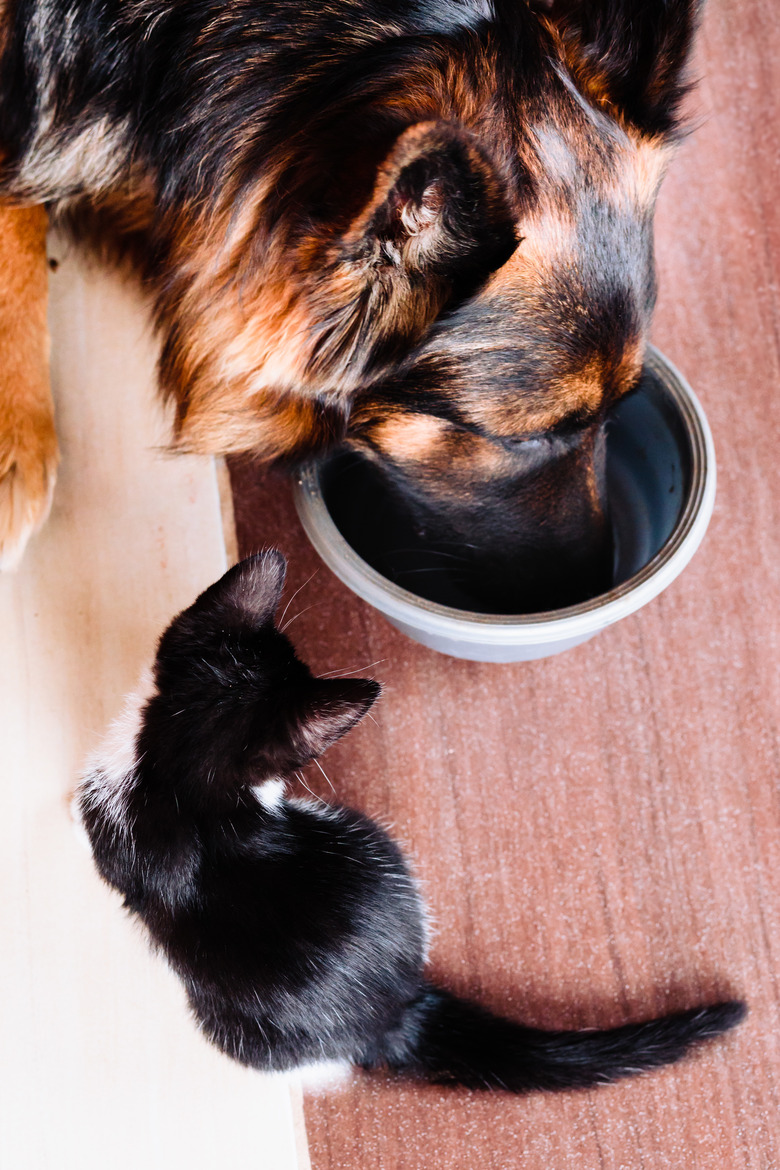Do Our Pets Prefer Hot Or Cold Food?
Cats and dogs both enjoy eating. In fact, most dog or cat parents will tell you that they can practically set their clocks by their lovable companions' stomachs. A hungry pet will certainly mean business when meal time rolls around. But do cats or dogs care if their food is hot or cold? To get to the bottom of this, we have to look first at what our favorite feline and canine companions like to eat.
Cats are carnivores, dogs are omnivores
Cats are carnivores, dogs are omnivores
While we often think about dogs in relation to their wild wolf cousins, the reality is that their diets differ. While wolves and wild dogs may subsist on mainly meats, our domestic dogs tend to be omnivorous. Although they do enjoy a balanced diet of proteins, fats, carbohydrates, vitamins and minerals, dogs are notorious for sneaking snacks that aren't good for them.
Cats, on the other hand, are true carnivores, also referred to as "obligate carnivores," and prefer to eat a diet rich in meat, and low in carbohydrates. In the wild, cats eat small mammals like mice or gophers and birds. Housecats not only prefer a meat- and fat-heavy diet, they require it, since cats lack the enzymes essential to breaking down many of the vitamins and minerals found in vegetables and grains.
What should dogs eat?
What should dogs eat?
Doggy diets should include a variety of ingredients. In fact, most dogs prefer a nice selection. Meats such as beef, chicken, rabbit, and fish are great choices for the fats and proteins. Starchy vegetables like potatoes, squash, and carrots as well as green and leafy vegetables like spinach and broccoli are healthy carbohydrate options. Additionally, grains such as oats, barley, or brown rice are filling and full of minerals and other nutrients. Dogs can eat dairy products like yogurt or cottage cheese and eggs are also beneficial for protein and fat.
Of course, dogs do have a tendency to eat some pretty gross stuff when left to their own devices. If your dog is eating non-food items like rocks, grass, or poop, it might be a sign of a nutritional deficit or illness and it is probably a good idea to go see a vet.
What should cats eat?
What should cats eat?
Kitty cats are known to be particular about what they like and food may be no exception. While some cats will eat almost anything, it is important that all cats have a meat heavy diet full of fat and protein. Cats don't burn carbohydrates for energy and fuel. Instead, think of their diets like a high protein, high fat, low carb diet. Additionally, since cats need quite a lot of water throughout the day, avoiding kibbles and dry foods can ensure that your cat stays hydrated.
Cold food or hot?
Cold food or hot?
Both dogs and cats will have a preference when it comes to food. Since both animals have the ability to "scent-taste" their food, they can pick up nuances of flavor before any food enters their mouths. Given the option between canned or dry foods, most dogs and cats will choose the canned version. There are even several health risks associated with dry foods and kibbles, especially for cats. Canned foods often times have more moisture, fewer fillers, and when served at room temperature, they are easily eaten and perhaps more reminiscent of a wild kill. In nature, cats and dogs that kill animals for food would be eating their dinner warm. It might be gross to think about, but a wild meal will be essentially body temperature.
Many dog and cat owners, as well as veterinarians and pet food companies, suggest that heating their cat's and dog's food makes it more palatable. If your lovable furball doesn't like her food cold from the fridge, try warming it up a little bit by mixing in some hot water or simply microwaving it in a microwave safe dish for a few seconds. Be sure not to heat it up too much and test it with a food thermometer to prevent scalding your pets mouth.
Raw food or cooked?
Raw food or cooked?
It is true that when food trends happen in human communities, they seem to be reflected in the diets of pets. Vegan diets, raw food diets, and other natural diets common in human households don't necessarily translate to dog and cat diets. While dogs are omnivores and can thrive on a well-maintained vegan diet, cats really do need to eat animal proteins and fats. When it comes to raw food diets, there is little information out there to suggest a raw food diet is objectively unhealthy. However, it can be very difficult to design a diet for your pet that is well-rounded with the correct amount of nutrients your pet requires. And if you are planning on feeding your pet raw food, it is absolutely imperative to engage in food safety practices. Handling raw meat increases the risks of contracting infectious diseases, parasites and bacteria for both you and your pets. So unless you are prepared to turn your kitchen into a chemistry lab and run the risk of infection and parasites, heating up your pet's food, especially the meat, until it is a safe temperature of at least 145 degrees Fahrenheit might be the way to go.
What’s the answer?
What's the answer?
The truth is, it really depends on your pet's particular tastes. A dog or a cat that is accustomed to a specific food or temperature probably won't appreciate a drastic change, or at least will need a few days to get used to the new food. While anecdotal evidence suggests cats and dogs like their food warmed up, a hungry pet will pretty much eat their dinner however they can get it.



